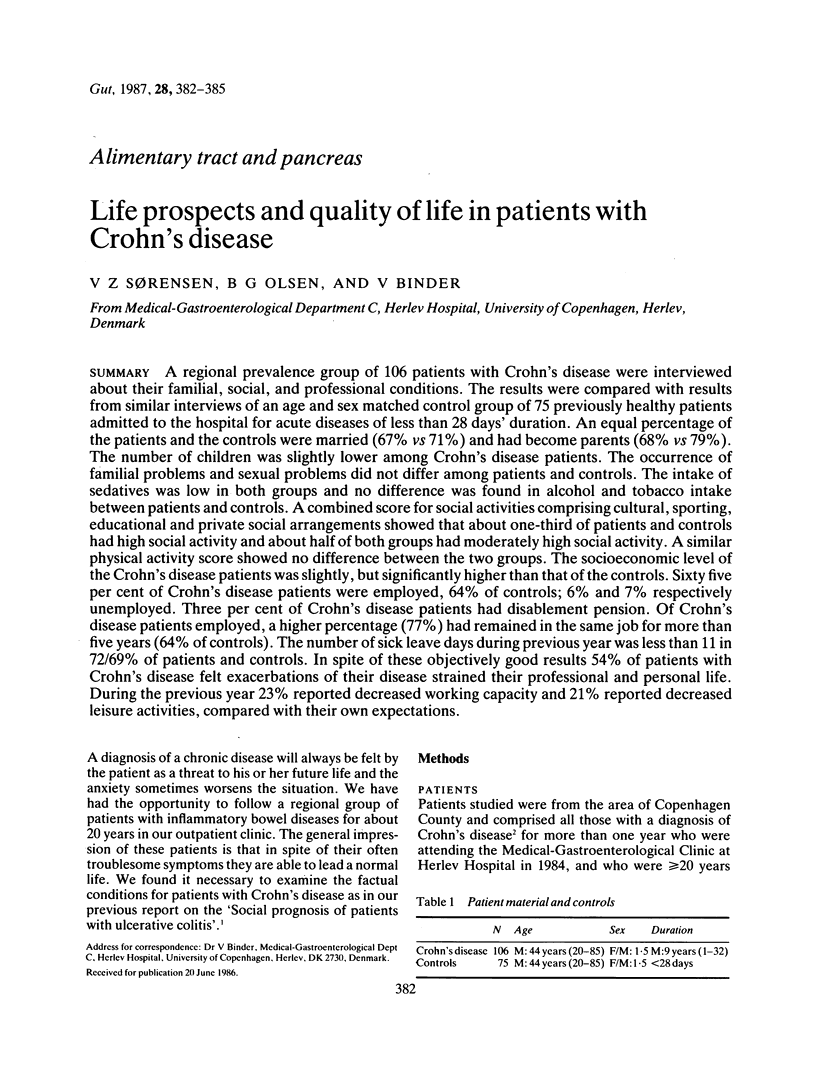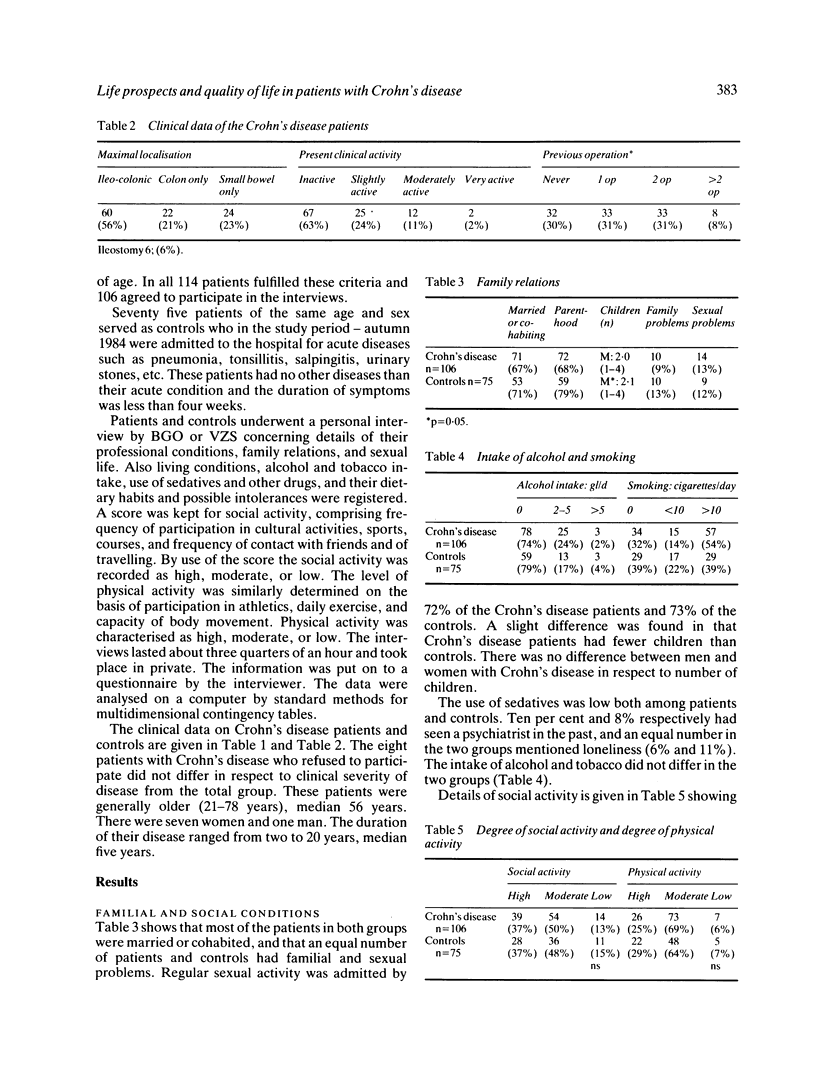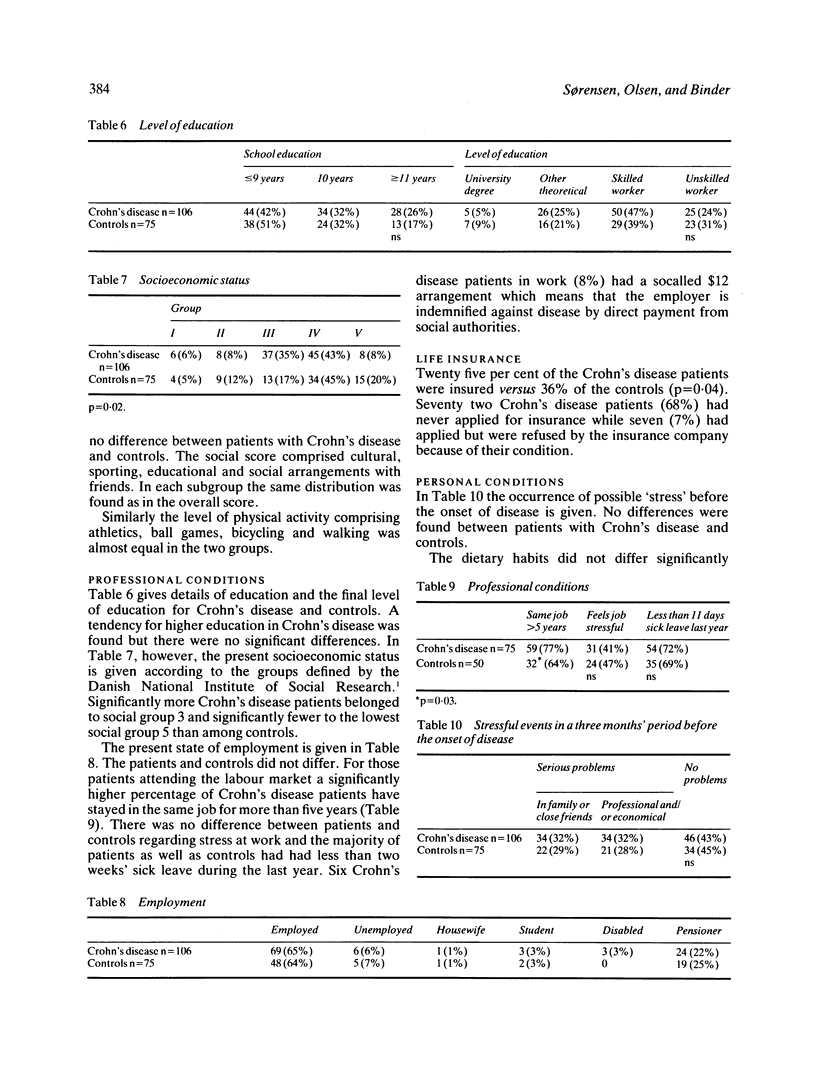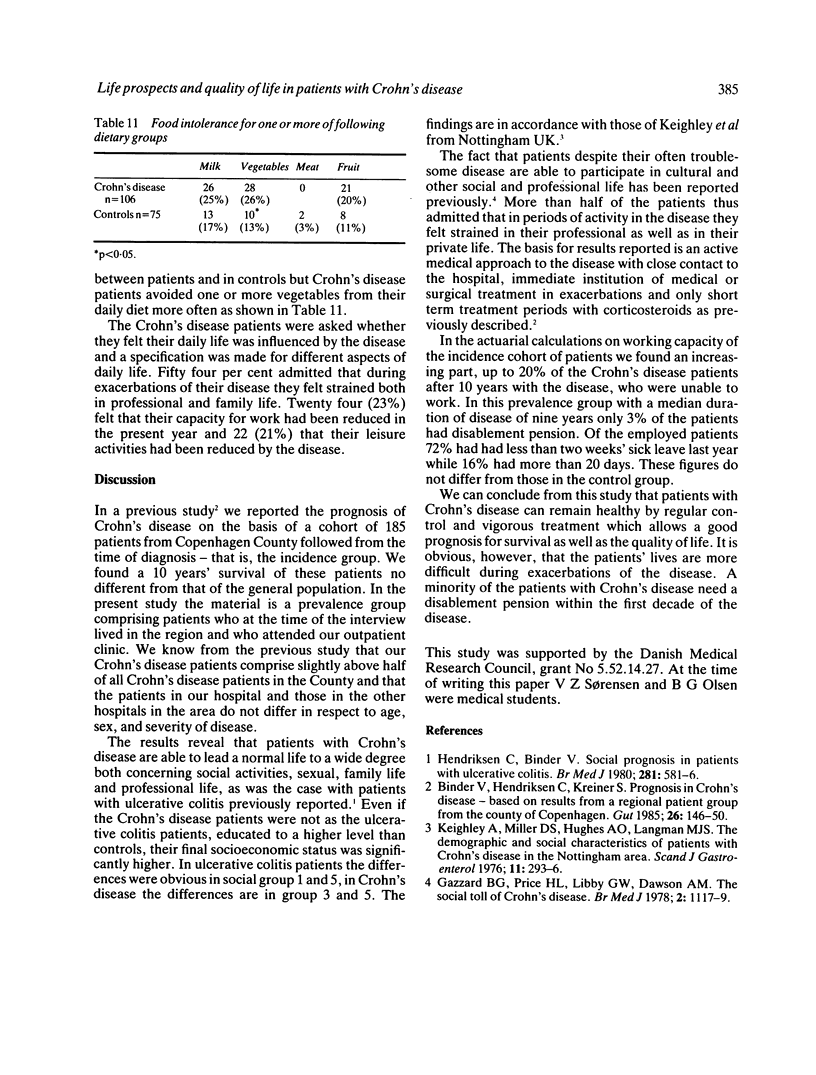Abstract
A regional prevalence group of 106 patients with Crohn's disease were interviewed about their familial, social, and professional conditions. The results were compared with results from similar interviews of an age and sex matched control group of 75 previously healthy patients admitted to the hospital for acute diseases of less than 28 days' duration. An equal percentage of the patients and the controls were married (67% vs 71%) and had become parents (68% vs 79%). The number of children was slightly lower among Crohn's disease patients. The occurrence of familial problems and sexual problems did not differ among patients and controls. The intake of sedatives was low in both groups and no difference was found in alcohol and tobacco intake between patients and controls. A combined score for social activities comprising cultural, sporting, educational and private social arrangements showed that about one-third of patients and controls had high social activity and about half of both groups had moderately high social activity. A similar physical activity score showed no difference between the two groups. The socioeconomic level of the Crohn's disease patients was slightly, but significantly higher than that of the controls. Sixty five per cent of Crohn's disease patients were employed, 64% of controls; 6% and 7% respectively unemployed. Three per cent of Crohn's disease patients had disablement pension. Of Crohn's disease patients employed, a higher percentage (77%) had remained in the same job for more than five years (64% of controls). The number of sick leave days during previous year was less than 11 in 72/69% of patients and controls. In spite of these objectively good results 54% of patients with Crohn's disease felt exacerbations of their disease strained their professional and personal life. During the previous year 23% reported decreased working capacity and 21% reported decreased leisure activities, compared with their own expectations.
Full text
PDF



Selected References
These references are in PubMed. This may not be the complete list of references from this article.
- Binder V., Hendriksen C., Kreiner S. Prognosis in Crohn's disease--based on results from a regional patient group from the county of Copenhagen. Gut. 1985 Feb;26(2):146–150. doi: 10.1136/gut.26.2.146. [DOI] [PMC free article] [PubMed] [Google Scholar]
- Gazzard B. G., Price H. L., Libby G. W., Dawson A. M. The social toll of Crohn's disease. Br Med J. 1978 Oct 21;2(6145):1117–1119. doi: 10.1136/bmj.2.6145.1117. [DOI] [PMC free article] [PubMed] [Google Scholar]
- Hendriksen C., Binder V. Social prognosis in patients with ulcerative colitis. Br Med J. 1980 Aug 30;281(6240):581–583. doi: 10.1136/bmj.281.6240.581. [DOI] [PMC free article] [PubMed] [Google Scholar]
- Keighley A., Miller D. S., Hughes A. O., Langman M. J. The demographic and social characteristics of patients with Crohn's disease in the Nottingham area. Scand J Gastroenterol. 1976;11(3):293–296. [PubMed] [Google Scholar]


